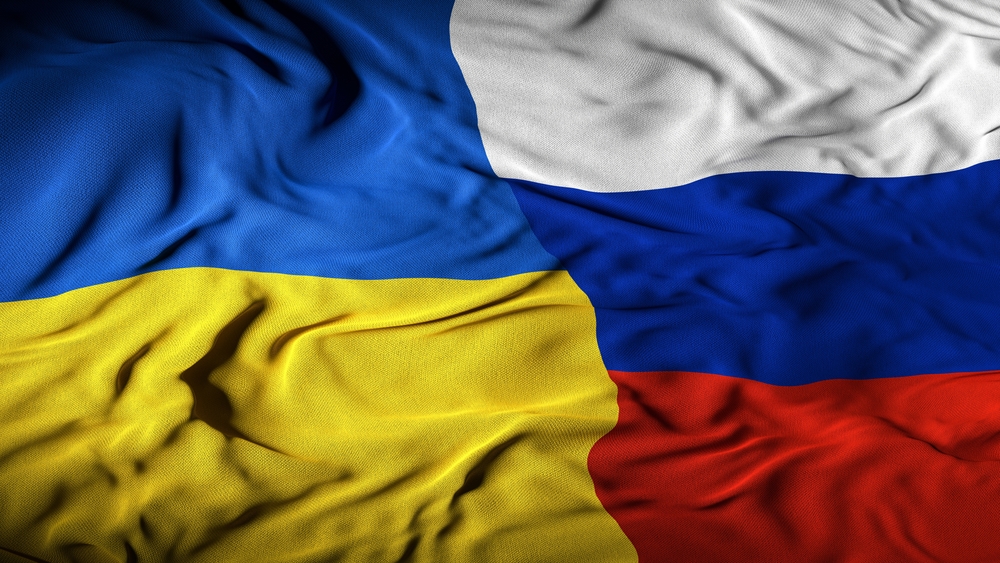Russian disinformation on the Kremlin-instigated crisis in Ukraine reached a new level of intensity between February 14 and February 20, 2022. Months of Russian warnings about a Ukrainian provocation developed into baseless accusations that Ukrainian forces had launched an offensive. On February 17, Russian state-directed media began to allege that the Ukrainian army had opened fire on several towns. A kindergarten was shelled during those attacks, which the Russian intelligence-linked website NewsFront blamed first on “Anglo-Saxon secret services in Ukraine” and then on the Ukrainian government. Dmitry Polyanskiy, Russia’s first deputy permanent representative to the United Nations, suggested that the attack on the kindergarten never actually happened. On the same day that the school was targeted, Russian state media claimed Ukraine had “amassed a huge offensive force” and planned an “amphibious assault” against Russian-backed separatists.
On February 18, a website associated with the Russian FSB, SouthFront, ran the headline, “war in Ukraine begins,” and Tass claimed that Kyiv had launched a “massive hour-long blitzkrieg.” These statements were paired with state media reporting on the Ukrainian army setting fire to towns, shelling villages, and failing to carry out multiple sabotage attempts. RT and others later said that a Ukrainian saboteur had been arrested and revealed Kyiv’s plans to take back the Donbass region through military force, a charge which the Ukrainian government has denied. Kremlin-backed media also reported on a car bomb that destroyed the vehicle of a Donetsk separatist leader. That car bomb was later shown to be staged. State media also played up the threat of Ukraine developing a nuclear bomb, despite there being no evidence of a Ukrainian nuclear weapons program.
Moscow-linked outlets also covered thousands of civilians being evacuated from Donetsk and Luhansk, two separatist-controlled areas in eastern Ukraine. The leaders of those areas called on women and children to relocate to Russia to avoid an alleged pending Ukrainian attack. State media circulated videos of evacuation sirens sounding, and RIA Novosti highlighted children in orphanages and schools fleeing. People were shown lined up at ATMs and stuck in traffic. Throughout the weekend, state media outlets gave different figures for the number of refugees, but it was generally reported to be around 40,000 civilians. RT said that United Russia, the party that supports Russian President Vladimir Putin, was set to provide humanitarian assistance. The outlet also noted a top Russian general saying that Russia’s military could “send peacekeepers to Ukraine.”
Earlier in the week, Putin reasserted his false claim that “what is happening in Donbass is genocide.” After German Chancellor Olaf Scholz dismissed Moscow’s genocide assertion, Russia’s Foreign Ministry said it would send Germany data of alleged mass graves in eastern Ukraine. Referring to Scholz’s refusal to accept Moscow’s lie about the genocide, Polyanskiy tweeted that “we hoped political culture in Germany has improved after WW2. Seems that we were mistaken.” Russian state media also accused the United States of “cynically rejecting” the Russian-imagined genocide.
Russian propaganda about Ukrainian provocations and human rights abuses was spread alongside claims of Russian innocence. At the start of the week, Russian officials argued that Moscow would “do everything within its power to prevent a war,” and state media circulated videos of Russian military equipment returning to their bases after exercises. RT editor-in-chief Margarita Simonyan said Russia would intervene “only with the aim of ending the war in Ukraine, and not starting it.” (Simonyan later asked for champagne on Russian television to celebrate Putin’s recognition of breakaway regions in Donetsk and Luhansk, widely seen as a dramatic escalation of the conflict). There were also claims that Russia’s recent response to the United States about their demands for security guarantees proved that Moscow wants a diplomatic solution. Also last week, Russian officials denied being involved with a cyberattack that impacted the websites of multiple Ukrainian government agencies and banks. U.S. and UK officials attributed the cyberattack to Russia’s military intelligence agency, known as the GRU.
As usual, Kremlin-backed accounts attempted to blame the West for escalating tension. RT claimed the United States was pushing Ukraine into war to “sell American military-industrial products.” Russian officials accused the West of spreading “war propaganda” and engaging in “information terrorism.” State media also picked up comments from Chinese Foreign Ministry spokesman Wang Wenbin about how the United States is “artificially creating a tense atmosphere” around Ukraine. Foreign Ministry spokesperson Maria Zakharova and others made fun of Western media outlets for attempting to predict the date of a Russian invasion. State media also dismissed the threat of Western sanctions, arguing that Russia will be able to defend its economy. There were, however, warnings that imposing economic costs on Russia would have global consequences.
The views expressed in GMF publications and commentary are the views of the author alone.





